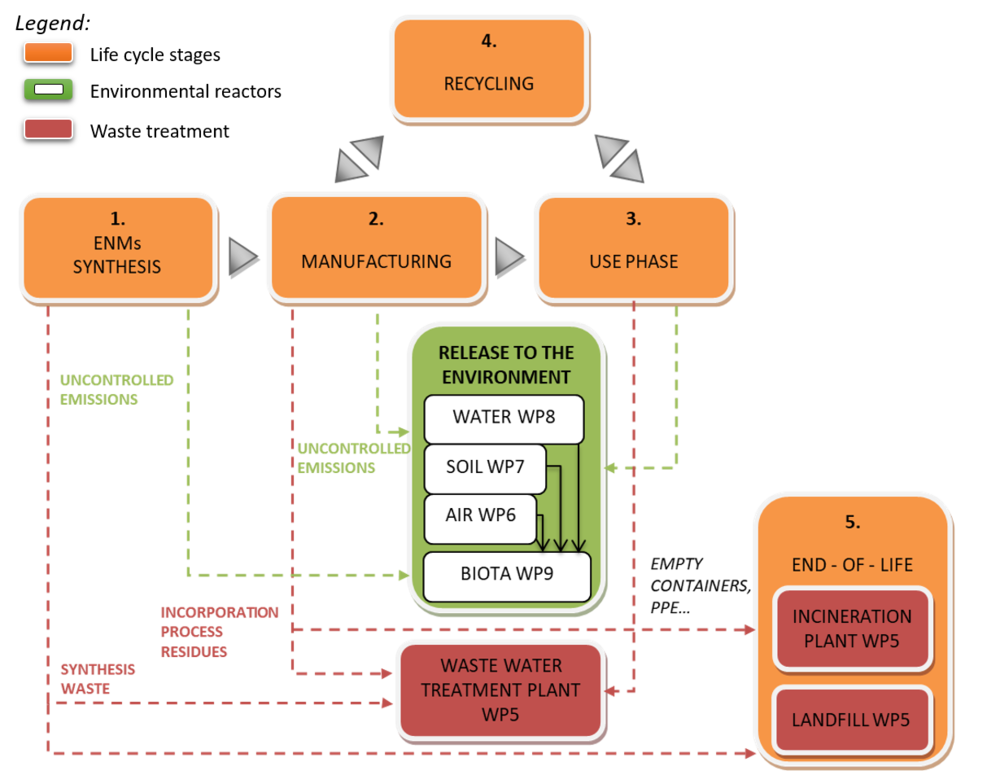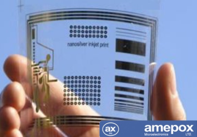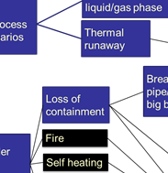ENMs and Nano-enabled products life cycle: NanoFASE Release Pathway Analysis
To develop the NanoFASE suite of modelling tools, potential environmental release pathways of engineered nanomaterials (ENM) from various manufactured nano-enabled products (NEPs) were identified through life cycle case study analyses. A detailed report of release estimations during ENMs and nano-enabled products value chain was published. Four case studies are presented (links at bottom of page).
Environmental exposure modelling, an important component of risk assessment, depends on precise identification of material flow as well as environmental fate models used for the calculation of predicted environmental concentrations (PEC). The NanoFASE analyses have estimated so-called uncontrolled emissions or unintended release of ENMs to the environment for each stage along the NEP life cycle: i.e. synthesis of particles, product manufacturing, product use, end-of-life ENM flows into waste management (e.g. waste water treatment, landfill or incineration) and recycling (see figure). (Occupational exposure is not studied in NanoFASE.)
It is worth mentioning that in the course of this pathway analytic work, NanoFASE has developed the first inventory of ENM production, ENM use and ENM release modelled at European Member State level for TiO2, Ag, ZnO, carbon black and Cu-based nanomaterials.

Figure: Potential environmental release pathways along the life cycle of nano-enabled products
Depending on the industrial methods and applications performed at each life cycle stage, release rates and pathways to different environmental reactors will differ. NanoFASE therefore collected information for the pathway analysis through direct surveys of industrial partners as well as from the literature, especially regarding the transformations ENMs might undergo during release from products.
The case studies confirmed that companies synthesising nanomaterials or incorporating them into nano-enabled products are highly attentive to waste reduction. Very little or none of these expensive materials is allowed to be lost during synthesis or manufacturing (and any unavoidable waste including e.g. personal protective equipment, PPE) is delivered in a controlled manner to the appropriate management facility). The NanoFASE pathway analysis may be of use to industry stakeholders by systematically highlighting potential emission routes, all of which can be checked during use or end-of-life industry safety assessments.
NanoFASE continued to augment the realism of the pathway analysis by including information from laboratory scale simulations, surveys sent to companies outside the consortium and also market evaluations.
Several release processes and various end-of-life compartments are pertinent:
Use |
End of life |
Case studies |
|
Pathway analyses were developed for five nano-enabled product applications: |
||||
|
|
|
|
|
|
|
Another NanoFASE scenario analysis was developed for the Air compartment: Accidental release to air during synthesis and handling in industrial processes. |
||||
Read more |
Contact
 Socorro Vázquez-Campos
Socorro Vázquez-Campos
Email: svazquez@leitat.org

Alejandro Vilchez

Vicenç Pomar-Portillo






